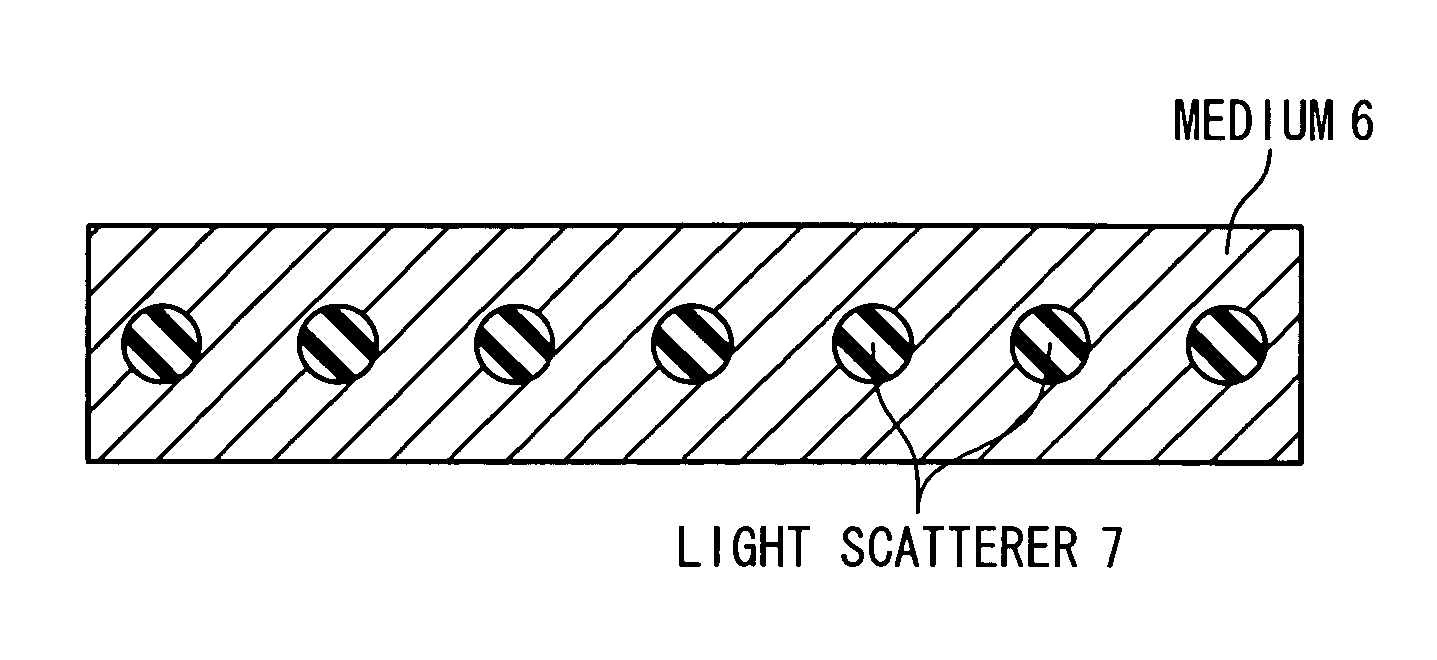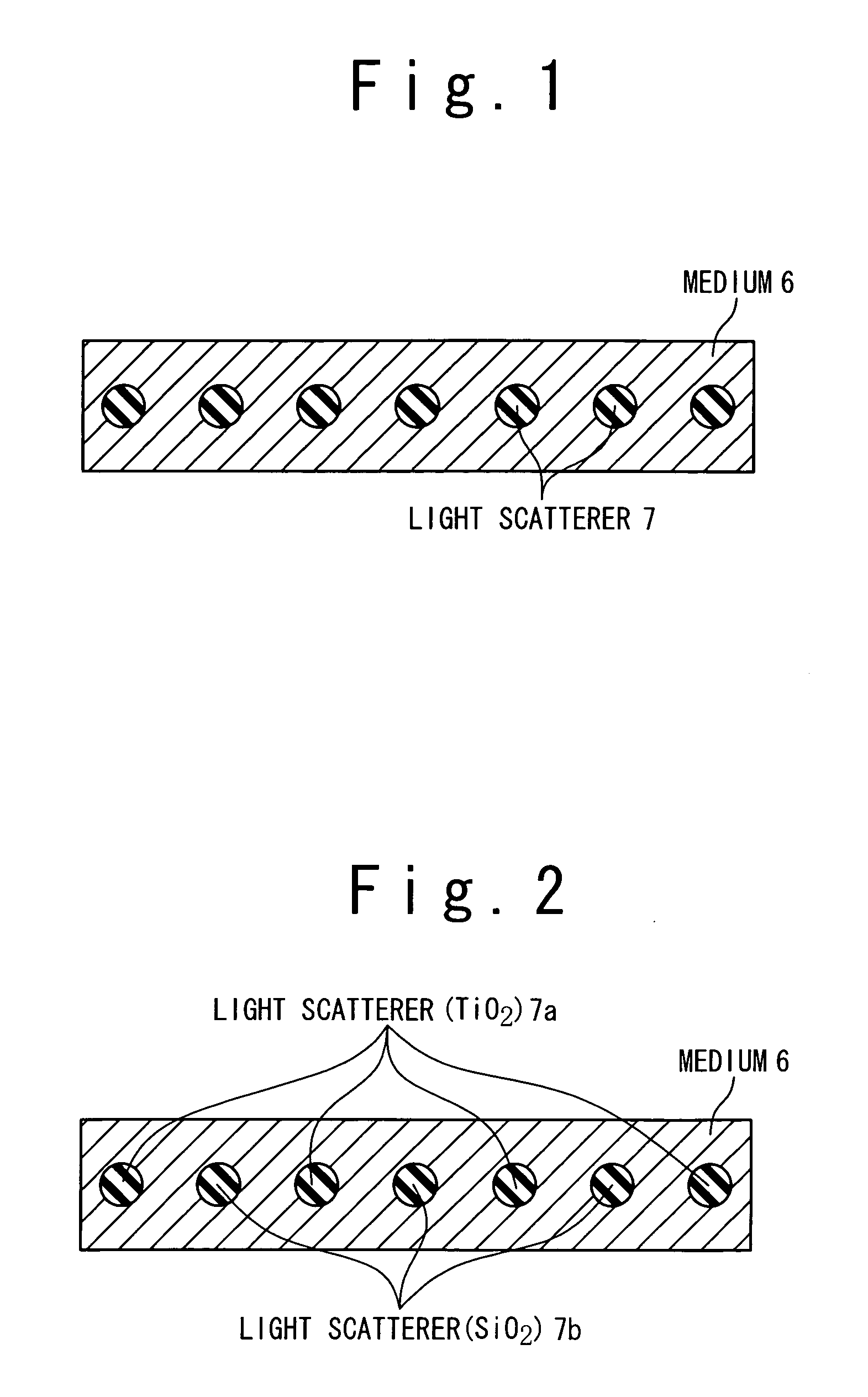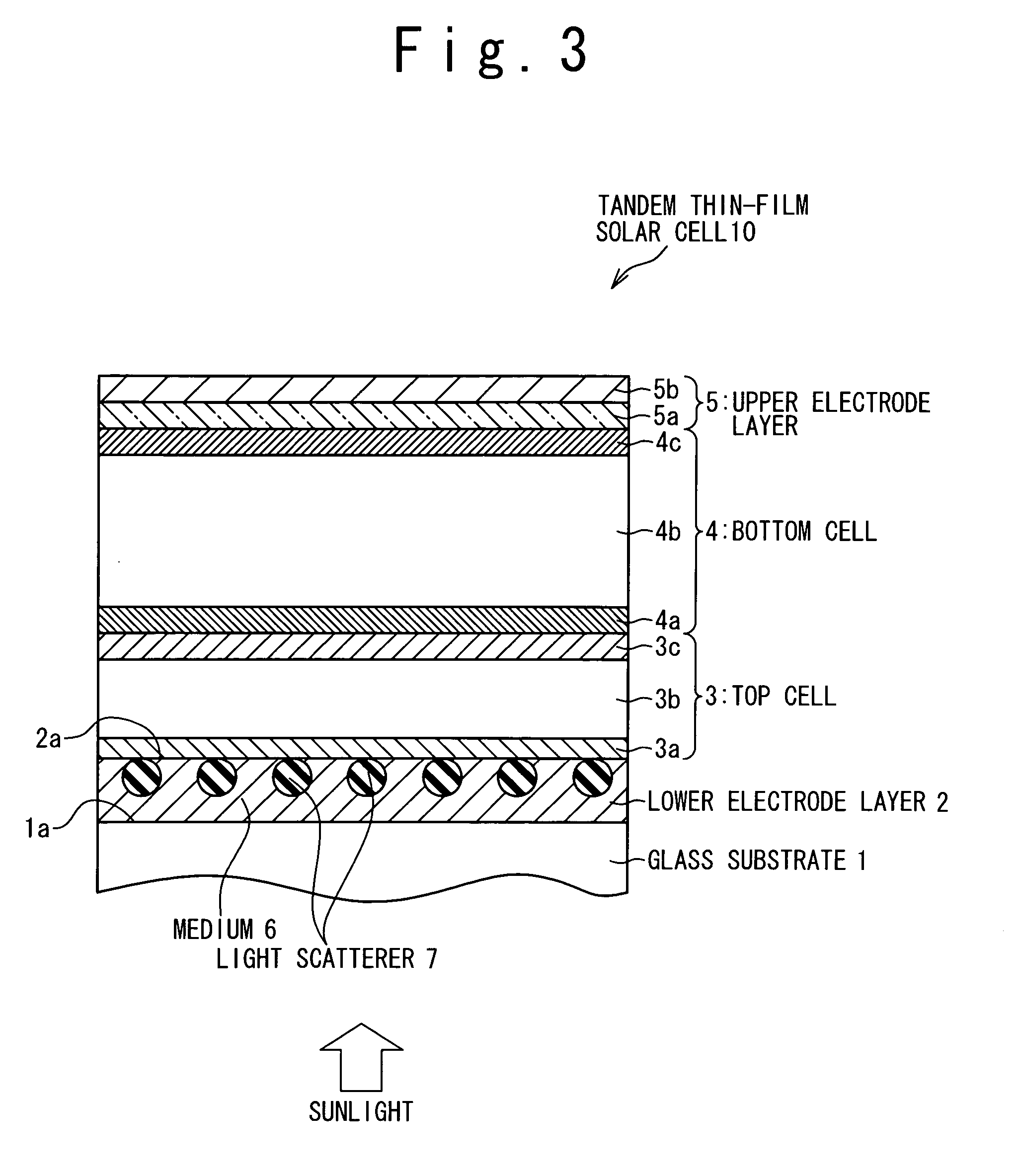Light-scattering film and optical device using the same
- Summary
- Abstract
- Description
- Claims
- Application Information
AI Technical Summary
Benefits of technology
Problems solved by technology
Method used
Image
Examples
first embodiment
[0050] In the first embodiment, a light-scattering film of the present invention is used as a transparent electrode of a photoelectric conversion device. In the embodiment, a tandem thin-film solar cell 10 is configured with a glass substrate 1, and is further configured with a lower electrode layer 2, a top cell 3, a bottom cell 4, and an upper electrode layer 5, which are formed in order on a principal surface 1a of the glass substrate 1, as shown in FIG. 3. The top cell 3 includes a p-type amorphous silicon layer 3a, an i-type amorphous silicon layer 3b, and an n-type amorphous silicon layer 3c, which are formed in order on the lower electrode layer 2. The bottom cell 4 includes a p-type microcrystalline silicon layer 4a, an i-type microcrystalline silicon layer 4b, and an n-type microcrystalline silicon layer 4c, which are formed in order on the top cell 3. The upper electrode layer 5 includes a ZnO layer 5a formed on the bottom cell 4, and an Ag layer 5b formed on the ZnO layer...
second embodiment
[0076] In the second embodiment, a light-scattering layer of the present invention is used as an electrode of a reflective liquid crystal display device, as shown in FIG. 11. In the reflective liquid crystal display device, it is required that outside light incident to the reflective liquid crystal display device is reflected, and further, scattered. The light-scattering film of the present invention is used as the electrode for applying a desired voltage to a liquid crystal, and as a light-scattering means to scatter the light.
[0077] More specifically, the reflective liquid crystal display device of the second embodiment is provided with a transparent substrate 31, an opposed substrate 32, a transparent electrode 33, an opposed electrode 34, and a polarizing film 35. The transparent substrate 31 and the opposed substrate 32 are supported to face to each other by a spacer 39, and a liquid crystal 36 is filled between the transparent substrate 31 and the opposed substrate 32. The tr...
third embodiment
[0081] In the third embodiment, a light-scatteinring layer of the present invention is used as an electrode of an organic EL (electroluminescence) element, as shown in FIG. 12. In the organic EL element, scattering of light generated by the organic EL element is useful in some cases. For example, when the organic EL element is used for a display device, the scattering of the generated light is useful for improving visibility of the display device. In this embodiment, the light-scattering layer of the present invention supplies an electric current to a light-emitting layer, and is further used to scatter the light.
[0082] More specifically, the organic EL element of the third embodiment is provided with a transparent substrate 41, a positive pole 42, a positive-hole transport layer 43, a light-emitting layer 44, an electron transport layer 45, and a negative pole 46. In the organic EL element, the positive holes are injected from the positive pole 42 to the light-emitting layer 44 th...
PUM
 Login to View More
Login to View More Abstract
Description
Claims
Application Information
 Login to View More
Login to View More - R&D
- Intellectual Property
- Life Sciences
- Materials
- Tech Scout
- Unparalleled Data Quality
- Higher Quality Content
- 60% Fewer Hallucinations
Browse by: Latest US Patents, China's latest patents, Technical Efficacy Thesaurus, Application Domain, Technology Topic, Popular Technical Reports.
© 2025 PatSnap. All rights reserved.Legal|Privacy policy|Modern Slavery Act Transparency Statement|Sitemap|About US| Contact US: help@patsnap.com



